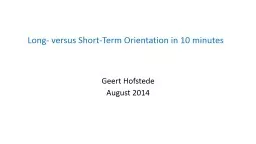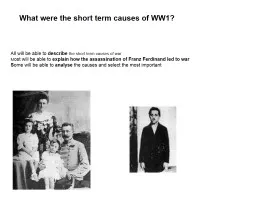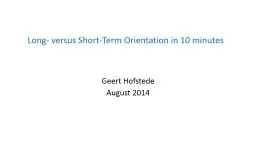PPT-Long- versus Short-Term
Author : aaron | Published Date : 2017-05-14
Orientation in 10 minutes Geert Hofstede January 2015 Origin of the term long versus shortterm orientation Coined by Hofstede in 1991 for a fifth dimension
Presentation Embed Code
Download Presentation
Download Presentation The PPT/PDF document "Long- versus Short-Term" is the property of its rightful owner. Permission is granted to download and print the materials on this website for personal, non-commercial use only, and to display it on your personal computer provided you do not modify the materials and that you retain all copyright notices contained in the materials. By downloading content from our website, you accept the terms of this agreement.
Long- versus Short-Term: Transcript
Download Rules Of Document
"Long- versus Short-Term"The content belongs to its owner. You may download and print it for personal use, without modification, and keep all copyright notices. By downloading, you agree to these terms.
Related Documents














